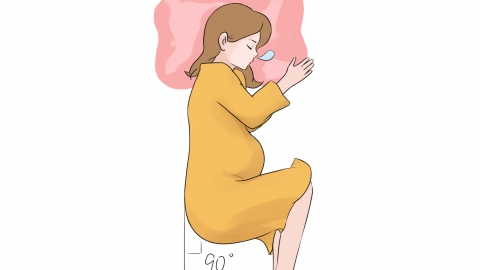What are the correct sleeping positions during early pregnancy?
During early pregnancy, proper sleeping positions include supine (lying on the back), side-lying, semi-reclining, using pillows for support, and avoiding the prone position (lying on the stomach). At this stage, the fetus is still small, so sleep posture choices are relatively flexible—comfort and avoiding abdominal pressure should be prioritized. If abdominal pain, vaginal bleeding, or severe insomnia occurs during sleep, medical attention is recommended promptly.
1. Supine position: The supine position may be briefly adopted in early pregnancy, with the body naturally relaxed and without excessive strain on the lower back. However, it should not be maintained for long periods to prevent later complications such as uterine compression of the inferior vena cava as the uterus grows. Short-term supine lying at this stage generally does not affect the fetus.
2. Side-lying position: Either left or right side-lying is acceptable; alternating between sides is recommended. This helps reduce abdominal pressure, improves blood circulation, prevents prolonged uterine deviation to one side, and can also relieve lower back pain that may occur in early pregnancy.

3. Semi-reclining position: For those experiencing nausea, acid reflux, or other discomforts, a semi-reclining position can be helpful. Use pillows to support the upper body, elevating it to a 30°–45° angle relative to the bed surface. This reduces gastroesophageal reflux and enhances sleep comfort, making it ideal for women experiencing early pregnancy symptoms.
4. Pillow-supported positions: Placing thin pillows under the waist or abdomen, or placing a pillow between the knees, helps support the body's natural curves, relieves muscle tension, reduces spinal pressure, maintains a comfortable sleeping posture, and improves sleep quality.
5. Avoiding the prone position: The prone position must be strictly avoided during early pregnancy. Lying on the stomach directly compresses the abdomen, potentially affecting fetal development, causing breathing difficulties for the mother, straining the lower back muscles, and increasing overall discomfort.
Avoid using electronic devices one hour before bedtime; instead, listen to soft music to relax. Keep the bedroom temperature comfortable, ideally between 22°C and 24°C. Choose a mattress with moderate firmness—neither too soft nor too hard—to promote restful sleep.




